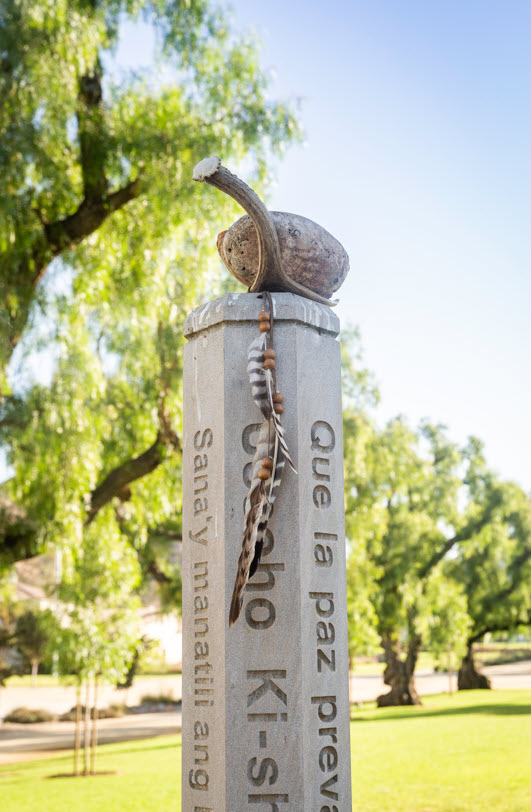 Over the past several years there have been significant changes to federal and state
laws, as well as CSU policies, to formally acknowledge our shared responsibility to
Native American, Alaska Native, and Native Hawaiian communities. The CSU, including
all of us here at CSUCI, have been explicit in our commitment to respecting and honoring
their cultural heritage, traditional homelands, and fundamental human rights. CSUCI
has the privilege of living and working on the homeland of the Barbareño/Ventureño Band of Mission Indians, which we continue to recognize and acknowledge.
Over the past several years there have been significant changes to federal and state
laws, as well as CSU policies, to formally acknowledge our shared responsibility to
Native American, Alaska Native, and Native Hawaiian communities. The CSU, including
all of us here at CSUCI, have been explicit in our commitment to respecting and honoring
their cultural heritage, traditional homelands, and fundamental human rights. CSUCI
has the privilege of living and working on the homeland of the Barbareño/Ventureño Band of Mission Indians, which we continue to recognize and acknowledge.
The NAGPRA Team aims to foster a culture where diversity, equity, inclusion, and accessibility is deeply embedded into our compliance, and we actively ensure that tribal voices and traditional ways of knowing are not only respected, but also remain integral to our decision making. This includes emphasizing open communication, full transparency, and building community with our tribal partners.
See the full President's communication regarding ongoing NAGPRA updates.
For any questions or to learn more, please reach out to nagpra@csuci.edu or to Amber-Marie directly, amber-marie.madrid@csuci.edu.
NAGPRA Team
- Amber-Marie Madrid, NAGPRA Director
- Alex Padilla, Tribal Liaison
- Dr. Jenn Perry, President's Designee
Learn More About NAGPRA and CalNAGPRA:
NAGPRA
The Native American Graves Protection and Repatriation Act (NAGPRA) is a federal law enacted in 1990 and implemented in 1995 (CFR Title 43, Subtitle A, Part 10). Federal NAGPRA established requirements and processes for federally-funded agencies and museums to repatriate Native American human remains and cultural items in their collections. The law also established processes for how to address new discoveries on Federal or (federally-recognized) tribal lands after 1990.
NAGPRA is enacted when remains and cultural items are “indigenous to Alaska, Hawaii, and the continental United States” and either: “(i) In Federal possession or control; or (ii) In the possession or control of any institution or State or local government receiving Federal funds; or (iii) Excavated intentionally or discovered inadvertently on Federal or tribal lands.” (Title 43, Subtitle A, Part 10). NAGPRA does not apply to unassociated funerary objects, sacred objects, or objects of cultural patrimony “...obtained with the voluntary consent of an individual or group that had authority of alienation…” (Title 43, Subtitle A, Part 10).
California Native American Graves Protection and Repatriation Act (CalNAGPRA)
In 2001, Assembly Bill (AB) 978 signed into law the California Native American Graves Protection and Repatriation Act (CalNAGPRA). CalNAGPRA expanded federal NAGPRA by requiring state-funded agencies and museums to comply. Provisions centered around consistency with federal NAGPRA while resolving some ambiguities in favor of Native Americans. CalNAGPRA further expanded NAGPRA by defining “California Indian Tribe” to include both federally-recognized Tribes (as per federal NAGPRA) and also included Tribes in California not recognized by the federal government.
In 2023, AB 389 further amended CalNAGPRA, requiring the California State University (CSU) system “comply with various requirements regarding the handling, maintenance, and repatriation of Native American human remains and cultural items” under CalNAGPRA. AB 389 requires that the CSU system adopt and implement “systemwide policies that, among other things, prohibit the use of any Native American human remains or cultural items for purposes of teaching or research at the California State University while in the possession of a California State University campus or museum.” The amendment also establishes guidelines for the composition of campus CalNAGPRA committees.
